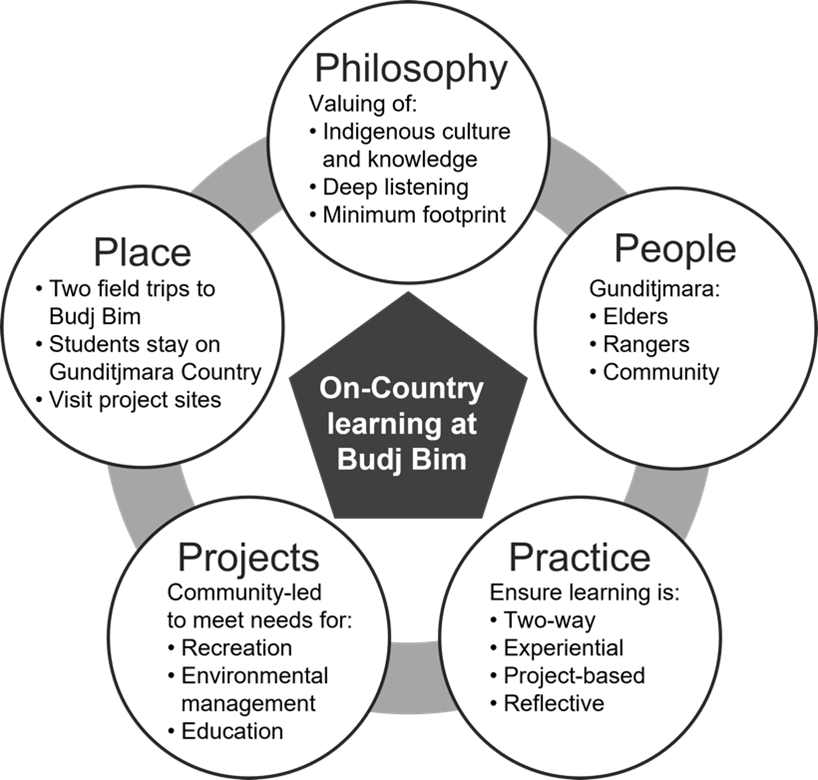
Posted by : Julian Prpic May 29, 2022
Contact : juliana.prpic at unimelb.edu.au Maps
Faculties and schools at the University continue to increase the Indigenous content in the curriculum. Each faculty and school as now produced a Divisional Indigenous Development Plan that collectively commit the University to further increasing the Indigenous knowledges and perspectives in the curriculum. In 2018, there were 51 subjects with an Indigenous focus with a total of 2394 enrolments, a significant increase on previous years.
In the subject Indigenous Engineering and Design, students develop an awareness of, and sensitivity to, Indigenous Heritage and Cultural values and apply this knowledge across a diversity of contexts. Students experience an on-country two-way learning exchange with the Gunditjmara community at the Budj Bim National and World Heritage Cultural Landscape at Lake Condah in south-west Victoria. Students explore various examples of Indigenous design and engineering developed over many thousands of years, including the aquaculture system, eel traps and stone house settlements.
Embedding Indigenous perspectives in the engineering curriculum can be complex and particularly challenging. Some of the challenges facing engineering educators include acknowledging the relevance of Indigenous knowledges and perspectives; understanding the needs, values and priorities of Indigenous communities (Goldfinch et al, 2014); lack of support from colleagues; and caution in involving the right Aboriginal people (Goldfinch et al, 2016; Goldfinch et al, 2017). These challenges have been compounded by the deficit model inherent in the Australian government’s Closing the Gap framework (Commonwealth of Australia, 2009).
Extract from Chapter 11, Indigenous Engineering for an Enduring Culture, edited by Cat Kutay, Elyssebeth Leigh, Juliana Kaya Prpic and Lyndon Ormond-Parker. Published by Cambridge Scholars Publishing
Author: Julian Kaya Prpic and Damein Bell
Location: 135 Kepler Street, Warrnambool (Budj Bim)